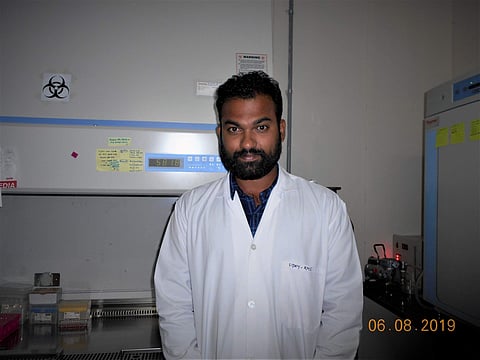

Indian Institute of Technology Hyderabad and Dr B R Ambedkar National Institute of Technology (NIT) Jalandhar researchers have developed a process by which bone implant materials can be synthesised from waste eggshells.
This research seeks to produce bone substitute materials such as β-tricalcium phosphate (β-TCP), a commonly-used bone substitute material from natural sources, without the use of toxic chemicals. The natural source of choice of the IIT Hyderabad researcher is eggshells. Eggshells are made of largely calcium containing minerals (95.1%) along with small amounts of proteins and water.
The use of graft materials to heal bone defects has been known for a long time. Sushruta Samhita, an ancient Sanskrit text on medicine and surgery, describes ‘Asthipoorana’ or bone grafting in which materials having calcium were combined with the latex of the banyan tree to form bone substitutes.
In modern medicine, damaged and missing bones are replaced with bone from either patient or donor or using artificial materials containing calcium, such as Plaster of Paris, and more recently, phosphate compounds like hydroxyapatite and calcium phosphate. Since the earliest recorded successful bone transplantation was carried out in 1668 by Van Meek'ren, a Dutch surgeon, more than 50 bone substitutes have been tested and tried.
This research paper has been co-authored by Roopavath Uday Kiran, PhD Student, Department of Biomedical engineering, IIT Hyderabad, Mahesh Kumar Sah, Assistant Professor, Department of Biotechnology, Dr B R Ambedkar National institute of Technology - Jalandhar, Dr Bharat B Panigrahi, Associate professor, Department of Material Science and Metallurgical Engineering, IIT Hyderabad and Dr Subha Narayan Rath, Associate professor, Department of Biomedical engineering, IIT Hyderabad.
Their work has been published in the March 2019 issue of the reputed peer-review journal Ceramics International. This project was guided by Dr Subha Narayan Rath and the experiments were conducted by Roopavath Uday kiran.
Explaining this research, Roopavath Uday Kiran said, “There is always some hesitancy in using synthetic chemicals as bone replacement materials because of the presence of chemical residues that are toxic if not eliminated completely. β-tricalcium phosphate (β-TCP), for example, is synthesized using nitrate compounds, which if present even in traces, could be dangerous.”
Further, speaking on his choice of egg shell for this research, Roopavath Uday Kiran added, “Bioceramics made from eggshell wastes are predicted to exhibit greater biocompatibility than other synthetic powders due to the presence of additional bioactive elemental ions inherently present in the eggshell. Eggshells are not only biocompatible, but are also inexpensive and can be obtained in unlimited quantities; millions of tons of eggshells are dumped as waste across the world.”
The researchers synthesised pure and thermally stable β-TCP nanopowder – powder a hundred thousand times smaller than the width of a single human hair – from egg- shells. They used a milling process called ball milling to produce these activated calcium phosphate powders. They also studied the effect of processing conditions on the nature of the powder.
The researchers fabricated scaffolds using these egg shell derived material and polymer, and evaluated cellular response on the surface of the scaffolds. Their results show that eggshell waste are promising enough to replace commercially available β-TCP produced using harmful nitrate precursors and has the capability to develop implantable biomaterial for tissue regeneration.
